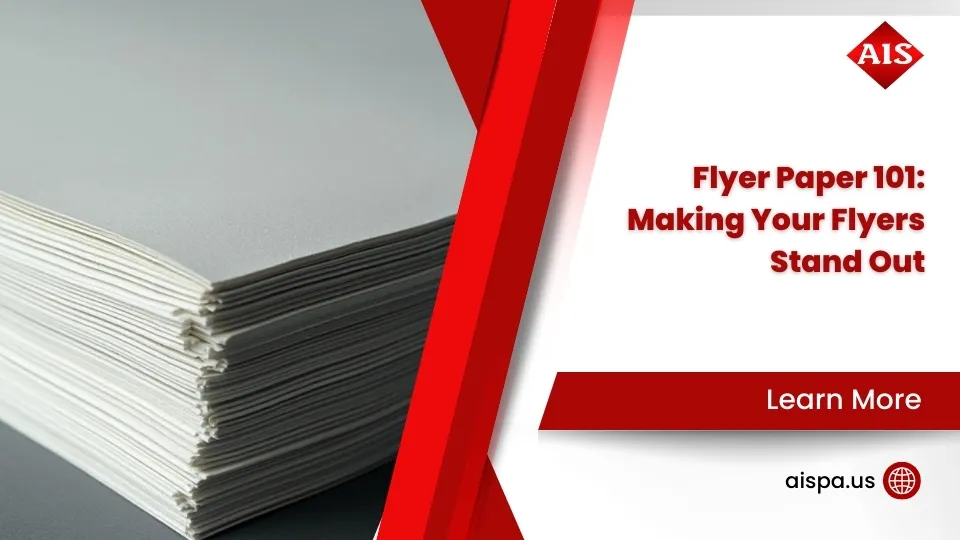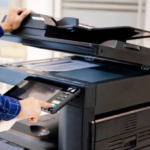From Glossy to Matte: Understanding Photo Album Sheet Types
Photo album sheets types play a crucial role in preserving the quality and lifespan of your memories. The right photo album sheets not only protect your photos but also improve their visual appeal.
Here’s a quick overview of the main photo album sheets types you’ll come across:
- Glossy Sheets: Highly reflective, great for vibrant colors (travel, landscape photos).
- Matte Sheets: Non-reflective, offers a soft, artistic look (portfolios, black-and-white images).
- Luster Sheets: Balanced sheen, ideal general-purpose choice (traditional albums, first-timers).
- Silk Sheets: Slight vintage feel and refined texture (wedding, family portraits).
- Linen Sheets: Classic look with noticeable texture (engagement, weddings, family).
- Pebble Sheets: Luxurious and artistic, favored by seasoned bookmakers (portfolio, product).
- Deep Matte Sheets: Fine art appeal, excellent for soft tones (artistic portfolios, soft lighting).
Choosing carefully ensures your photos remain vivid and intact for decades.

Exploring Different Photo Album Sheet Types
Choosing the right photo album sheets types can make a big difference in how your cherished memories look and how long they’ll last. Whether you’re creating a family keepsake, a professional portfolio, or a special wedding album, selecting the right sheet type will improve your photos and keep them vibrant for years.
Quality photo books today are printed on archival photo paper—these papers are specifically designed to preserve images. Unlike digital photos, which might become outdated, archival inks and photo papers ensure that your printed memories remain vivid and beautiful for generations to come.
Let’s take a closer look at the different photo album sheets types available, and how each one can improve your images.
Understanding Glossy Photo Album Sheets Types
Glossy photo album sheets have a shiny, reflective finish that brings images to life. They create bright, vibrant colors and sharp details, making your photos look crisp and vivid. Glossy sheets work especially well for travel photography, landscapes, and professional portfolios—any situation where you want to highlight striking colors and captivating details, like lush green forests, vibrant cityscapes, or crystal-clear oceans.
“With underwater photography, high gloss would probably bring out more of the colors and give the images more of the ‘pop’ you’d associate with underwater shots.” – Photo Book Girl
This makes glossy sheets a favorite among nature photographers and enthusiasts. Just keep in mind, glossy finishes can show fingerprints and reflections more easily, so it’s best to view them in environments where you can minimize glare.
Exploring Matte Photo Album Sheets Types
If you prefer a softer look, matte photo album sheets might be your best pick. Matte sheets have a non-reflective surface that gently diffuses light. This finish gives your photos a subtle, artistic feel that’s ideal for black-and-white images, portraits, fine art photography, and anything taken with soft lighting.
Professional photographers frequently use matte sheets for portfolio presentations because it adds a sophisticated, gallery-like touch to their work. Another big plus? Matte sheets are great at resisting fingerprints and smudges, making them perfect for albums that family and friends will frequently flip through.

Luster Photo Album Sheets
Can’t decide between glossy and matte? You’re not alone! That’s why luster sheets have become the most popular choice for photo album makers. Luster sheets offer a balanced sheen and subtle texture, providing the richness of glossy without the full reflection, and the fingerprint resistance of matte without sacrificing vibrant colors. It’s a versatile finish that’s excellent for everyday photo albums, family memories, and special occasions.
For first-time photo bookmakers, luster sheets are the safest bet—they’re universally flattering to just about any photo type.
“All of the photo books I’ve printed with Printique have been on luster. It’s a good all-around choice.” – Photo Book Girl
Silk Photo Album Sheets
For something truly special, silk photo album sheets add a touch of vintage elegance. They have a refined, slightly textured surface that adds a lovely dimension to wedding photos, family portraits, and sentimental images. Silk sheets beautifully highlight skin tones and delicate details, creating albums you’ll cherish revisiting.
Wedding photographers often recommend silk photo papers because they give portraits and ceremony shots a soft, romantic look. If you’re creating an album you’ll treasure for years to come, silk sheets might just be your perfect match.
Linen Photo Album Sheets
Looking for something with a bit more texture? Linen photo album sheets offer a classic, slightly more noticeable surface that resembles fine linen fabric. The subtle crosshatch pattern adds depth, making formal portraits, wedding photos, and engagement pictures appear even more engaging and sophisticated.
Linen sheets lend a warm, handcrafted feel to your photos. If you want your album to look timeless and classy, linen sheets are a wonderful choice.
Pebble Photo Album Sheets
Pebble photo album sheets take texture to the next level. Offering a luxurious, artistic finish reminiscent of fine art paper, pebble sheets are appreciated by seasoned bookmakers and photographers aiming for a premium presentation.
These sheets are fantastic for professional portfolios, product photography, landscapes, and still-life compositions. The texture of pebble sheets brings your photos to life, adding a tactile feel and an extra dash of personality. If you’re looking to impress with a high-end look, pebble sheets will definitely stand out.
Deep Matte Photo Album Sheets
Finally, deep matte photo album sheets deliver the most subtle and refined finish, completely eliminating reflections and glare. This finish is ideal for artistic images, especially black-and-white photography, photos captured in soft light, or deeply thoughtful compositions.
Deep matte sheets mimic traditional darkroom prints, giving your images museum-quality appeal. Fine-art photographers gravitate towards them because of their understated elegance, allowing viewers to fully appreciate each image’s subtle details and tones.

Choosing the perfect photo album sheets types is more than just a finishing touch—it’s the key to truly celebrating and preserving your favorite memories.
Types of Photo Albums Based on Mounting Methods
Choosing the right photo album sheets types is just half the story—how you mount your photos also has a big impact on their presentation, usability, and long-term preservation. Let’s stroll through the three main types of photo albums based on mounting methods, so you can find the one that’s just right for your memories.
Slip-in Photo Albums
Slip-in albums—also known as photo pocket albums—are perfect if you love simplicity and convenience. These albums come with clear, pre-sized pockets that let you slide your photos right in. Usually, these pockets are designed for standard-sized prints (most common is 4×6 inches), but you’ll find options for other popular photo sizes as well.
What’s great about slip-in albums is how user-friendly they are—no glue, no tape, no hassle. Simply slide each photo into a pocket, and you’re set! Many slip-in albums also offer small memo spaces next to each pocket, so you can jot down dates, names, or little memories directly alongside your pictures.
But keep in mind, slip-in albums have their limitations. Since pockets are pre-sized, you might struggle with larger prints or oddly shaped photos. Plus, layout flexibility is limited because you can’t move pockets around or create custom arrangements. So, they’re best suited for folks who mostly print standard-sized photos and prefer straightforward organization.
Drymount Albums
Drymount albums, sometimes called traditional photo albums, pergamyn, or rice paper albums, offer a whole lot more creative freedom. Instead of pre-sized pockets, these albums feature blank pages made from high-quality, acid-free materials. Putting photos into drymount albums involves using photo corners, photo splits (small adhesive tabs), or archival-quality tape runners to attach your pictures to the page.
The major advantage here is versatility. You can freely mix photo sizes, orientations, and even add in memorabilia like postcards, ticket stubs, pressed flowers, or handwritten notes—all on the same page. This flexibility lets you tell your story exactly how you want and is especially popular for wedding albums, scrapbooks, and personalized keepsakes.
Drymount albums also include protective interleaving sheets, typically made of glassine, to keep your photos safe and free from scratches or smudging. With careful mounting using archival-quality adhesives, your photos will stay pristine for decades.
If you love creativity or have a collection of photos and keepsakes of varying sizes, drymount albums could be your perfect match. They’re perfect for those cherished memories that deserve a little extra TLC and a special, personalized touch.
Self-Adhesive Albums
Self-adhesive albums—also called “magnetic” or easy-mount albums—strike a nice balance between flexibility and hassle-free mounting. Each page is coated with a gentle adhesive and covered by a clear protective film. To mount your photos, simply peel back the film, position your images however you like, and then smooth the film back down into place.
This quick and easy method means no separate adhesives or photo corners are needed. Plus, you can easily reposition photos (at least for a while), making it ideal if you change your mind or want to update your album from time to time.
But here’s something important to remember: not all self-adhesive albums are photo-friendly. Older or lower-quality albums might use harsh adhesives that can discolor or damage your pictures over the years. To ensure your images stay safe and look their best, always choose albums clearly labeled as using acid-free, photo-safe adhesives.
Self-adhesive albums work great for folks who want flexibility without fuss—just be sure to shop carefully for quality albums designed for long-term preservation.
The best choice depends on your photos, your style, and how you prefer to showcase and preserve your treasured memories. Whichever mounting method you choose, pairing it with the right photo album sheets types ensures your photos will look fantastic and last a lifetime.
To learn more about high-quality photo printing and preservation options, check out Associated Imaging Solutions’ printing services.
Factors to Consider When Choosing Photo Album Sheets
Choosing the perfect photo album sheets types for your precious memories involves considering several important factors. Each factor influences both how your photos look and how well they’ll stand the test of time. Let’s explore these key points so you can find the ideal match for your needs.
Preservation and Archival Quality
One of the most crucial things to look for when selecting photo album sheets is their ability to preserve your cherished photos. Over time, low-quality materials can lead to yellowing, fading, and deterioration of your images. To keep your memories safe for decades, choose sheets made from acid-free and lignin-free materials.
Acid-free sheets prevent harmful chemicals from damaging your photos, keeping them clear and vibrant. Likewise, lignin-free materials protect pictures from discoloration and brittleness. A good rule of thumb is looking for albums that explicitly mention “archival quality” or “photo-safe.” Professional photo preservation experts recommend inert polypropylene pages for ultimate protection and longevity.
“With a high-quality photo album, you can rest easy knowing that each photo is protected against fading, yellowing, and damage caused by humidity or environmental factors.”
Spending a little more on archival-quality materials ensures your treasured wedding albums, family portraits, and travel photos remain beautiful for generations.
Materials Used in Photo Album Sheets
The materials used in your photo album sheets significantly impact their visual quality and how effectively they protect your memories.
Clear polypropylene sheets are chemically inert and ideal for slip-in albums or protective sleeves. They’re safe, durable, and won’t react negatively with your photos.
Archival paper, used in quality drymount albums and professionally printed photo books, is specially treated to keep your images safe from chemical damage. This paper provides excellent protection and is available in various finishes to match your desired aesthetic.
When shopping online or in-store, keep an eye out for phrases like “photo-safe,” “acid-free,” or “archival.” These terms ensure you’re selecting sheets specifically designed to protect and showcase your photos beautifully.

Paper Weight (GSM)
You might not usually think about the weight of paper, but it’s surprisingly important when it comes to photo albums. Paper weight is measured in GSM (grams per square meter), and it affects both the durability and feel of your pages.
Lightweight paper (around 118-150 GSM) feels similar to magazine pages—it’s budget-friendly but not durable enough for long-term photo albums. Medium-weight paper (200-250 GSM) provides a good balance between quality and affordability, but it may still have durability issues if handled frequently.
For most photo albums, experts generally recommend papers between 250-300 GSM. This weight provides the perfect balance—sturdy enough to protect your photos yet still flexible and pleasant to flip through. Premium paper (300+ GSM) is extra durable but may feel stiff when turning pages, so consider how frequently the album will be viewed.
Texture and Finish
As we’ve explored earlier, different textures and finishes dramatically change how your photos look and feel. Matching the right photo album sheets types to your photography style makes a huge difference.
If you want vibrant, high-contrast images to truly stand out (think travel or landscapes), Glossy sheets provide color-rich results. Matte sheets are perfect if you want to create a sophisticated, artistic feel—especially for black and white or softly lit pictures.
Luster sheets offer the best of both worlds—a versatile, all-around choice ideal for everyday photo albums. If you’re looking to add a bit of tactile charm, sheets with subtle textures like Silk, Linen, or Pebble can add elegance, depth, or a vintage feel to special occasions such as weddings and engagements.
Photo Sizes and Mounting Methods
It’s easy to overlook photo sizes, but they strongly affect your choice of album sheets. Standard-sized photos like 4×6, 5×7, or 8×10 work effortlessly with slip-in albums. Simply slide your pictures into transparent pockets—quick and convenient.
However, if your collection includes a variety of sizes or you want more creative freedom with your page layouts, then drymount or self-adhesive albums are your best bet. These albums let you arrange photos freely, mixing sizes and orientations. You can even add memorabilia like postcards or ticket stubs to improve the storytelling.
For panoramic images or unique-sized prints, double-check album dimensions to ensure your photos can fit comfortably without awkward cropping.

Matching Sheet Types to Photo Types
Finally, keep in mind your photography subjects when selecting photo album sheets. Certain finishes naturally complement specific styles of images.
For wedding and portrait photography, Silk, Linen, or Luster finishes beautifully improve skin tones and formal compositions, lending a timeless charm to your album. Glossy or high-gloss sheets make landscape and travel photos pop, highlighting vibrant colors and sharp details.
Black and white photography usually benefits from Matte or Deep Matte sheets, as they highlight subtle gray tones and eliminate distracting glare. For everyday family photos, it’s hard to beat Luster as a versatile, reliable choice.
As Photo Book Girl humorously reminded us, “Subject matter is very important when picking paper. A family trip to Disney World probably isn’t suited for Deep Matte sheets—those vivid, cheerful colors deserve a finish that makes them shine!”

Taking the time to choose the right photo album sheets types ensures your memories aren’t just preserved—they’re beautifully displayed for years (and generations) to come!
Best Practices for Preserving Photos in Albums
You’ve carefully selected your perfect photo album sheets types, matched them with your favorite pictures, and now you’re ready to create an album that stands the test of time. But how exactly do you make sure your precious memories remain vivid, clear, and well-preserved for generations? Grab a cup of tea, relax, and let’s talk about some simple yet essential best practices that will keep your photographs in tip-top shape.
Mounting Photos in Drymount Albums
If drymount albums caught your eye and heart, you’re in good company. These albums offer wonderful flexibility and creativity, letting you include photos of various sizes and even memorabilia. However, it’s crucial to mount your precious photos correctly to protect them over time.
When mounting your photos, photo corners are your best friend. These handy little triangles hold photos securely in place without letting adhesives come into direct contact with your photographs. This means you can reposition or remove photos down the line without worrying about damage.
Another great option is photo splits or adhesive tabs. These tiny double-sided adhesives are specifically designed for photos. Gently stick them to the back of your photos near the edges and press the picture onto your album page. Easy and neat!
For larger photos or memorabilia, consider archival tape runners. They dispense a smooth, acid-free adhesive that protects your photos while ensuring everything stays neatly in place. Always apply adhesive on the back side of your photograph rather than the album page, making it easier to control placement.
If you’re extra cautious, clear photo sleeves made from archival-quality polypropylene can offer double protection. They’ll shield your photographs against fingerprints, dust, and accidental spills.
Take your time and arrange photos on the page before permanently sticking them down. A little planning goes a long way toward keeping your album beautifully organized and your memories intact.
Using Archival Adhesives
Speaking of adhesives, let’s talk about the gluey stuff. Not all adhesives are created equal—some contain harmful acids and chemicals that damage your photos over time.
Always choose acid-free, photo-safe adhesives when creating your albums. Check labels carefully to confirm the product you’re using is specifically designed for photos and archival preservation.
When you glue, go easy. Use just enough adhesive to secure your images without saturating or buckling them. Less is definitely more when it comes to adhesives, and this minimal approach makes it easier to rearrange photos in the future.
If you’re trying a brand-new adhesive, test it on a less important photo first. This way, you avoid heartbreak if something unexpectedly goes awry. Trust us, we’ve learned this tip the hard way!
Avoiding Acidic Materials
Acid is like the villain in your photo preservation story—it causes fading, yellowing, and deterioration. To keep your photographs safe and sound, steer clear of any materials that aren’t explicitly labeled acid-free or archival-quality.
Many older or low-quality self-adhesive albums (sometimes called magnetic albums) contain acids that harm photographs over time. Modern versions can be safe, but always verify that they’re clearly labeled acid-free and photo-safe.
Also, be cautious with decorative papers, construction paper, or colored cardstock. These often contain hidden acids. If you absolutely must incorporate them into your album for aesthetic purposes, place a protective layer of acid-free tissue paper between the decorative paper and your photos.
And remember, if you’re adding handwritten notes or captions, use archival-quality pens. Regular inks can fade, bleed, or degrade your photos, while archival pens are specifically designed to last without harming your precious images.
Storage Conditions
Even the highest-quality album won’t protect your photos if it’s stored improperly. Where you keep your photo albums matters just as much as how you create them.
Aim to store your albums in a place with moderate temperature and humidity—approximately 65-70°F with 30-50% relative humidity is ideal. Too much heat, moisture, or rapid fluctuations can damage your photos and album materials.
Always avoid direct sunlight. Exposure to UV rays can cause colors to fade and paper to yellow. Keep albums in shaded areas or on shelves away from windows.
Speaking of shelves, it’s best to store albums upright, like books on a library shelf, rather than stacked horizontally. Standing them vertically prevents warping, creasing, and binding damage.
If you have extra special albums—perhaps wedding books, heritage family photos, or irreplaceable collections—consider placing them in archival storage boxes. These offer additional protection from dust, moisture, and UV rays.
Photo Handling Tips
Now, a quick word about handling your precious prints before they make it into the album. Treating your photos carefully from the start reduces the risk of damage later on.
Always handle photos by gently holding them along their edges. This prevents unsightly fingerprints and smudges caused by skin oils. Before diving into your album project, wash and dry your hands thoroughly. If you’re working with especially delicate or antique photos, consider wearing clean, white cotton gloves—this is a pro archivist trick!
Keep your workspace clean and tidy. Clear away snacks, drinks, and messy materials that could accidentally harm your photos. And above all else, don’t rush. Working calmly and taking breaks helps you avoid careless mistakes and ensures a beautifully preserved album.
At Associated Imaging Solutions, we understand the importance of preserving your images and memories. Our services combine local expertise and advanced technology—so whether it’s professional-grade printing or friendly advice on keeping your photos looking their best, we’re always here to help.
Happy album-making!
Frequently Asked Questions about Photo Album Sheet Types
How does the choice of sheet type affect photo preservation?
Choosing the right photo album sheets types directly impacts your photos’ longevity and appearance. It all comes down to the quality of materials and structure of the sheets you pick.
First and foremost, always go for archival-quality, acid-free materials. Acidic papers and adhesives can slowly harm your photos, causing them to fade, yellow, or deteriorate over time. Materials like polypropylene are chemically inert, meaning they’re safe and won’t react negatively with your precious memories.
Also, consider sheet thickness. Sheets around 250-300 GSM offer sturdy protection, reducing the chance of bending, creasing, or other physical damage from regular handling.
And how about the album itself? Albums designed with interleaving sheets—thin protective layers between pages—prevent photos from sticking together or transferring ink. Choosing albums that lie flat when open also puts less stress on your photos and the album binding, helping everything last longer.
What are the benefits and drawbacks of self-adhesive photo albums?
Self-adhesive albums (sometimes called “magnetic page albums”) can be super convenient—no glue sticks or photo corners required. They’re popular for their ease of use since you can quickly mount photos of various sizes exactly how you want them. The result is a neat and tidy appearance with a clean presentation, which is always a bonus.
However, there are some things you should watch out for. Older versions or lower-quality self-adhesive albums might use adhesives that damage your photos over time. Photos can sometimes become difficult to reposition once placed, potentially leading to tearing or creasing. Another thing to consider is that some adhesives may lose their stickiness with age, causing photos to detach unexpectedly. Plus, humidity can sometimes cause pages to stick together if adhesive seeps out from edges.
Don’t worry—there’s a simple solution. Always look for self-adhesive albums clearly labeled as acid-free and photo-safe. Modern, high-quality albums typically address these concerns, offering safer adhesives that won’t harm your memories.
How do different sheet types accommodate various photo sizes?
This is a common concern—especially if you’ve got lots of uniquely sized photos. Here’s how the main album types handle different sizes:
Slip-in photo albums are pre-designed with pockets, usually made for standard sizes like 4×6 inches. They’re great for ease of use, but not so flexible if you have varied or odd-sized photos.
On the other hand, drymount albums (or traditional albums) give you total freedom. Their blank, acid-free pages let you arrange photos of various sizes—even panoramas or oversized prints—just the way you like. You can easily include memorabilia and mementos alongside your pictures, which is ideal for creative scrapbookers or special projects.
Self-adhesive albums offer similar flexibility. Because of their sticky pages without fixed pockets, you’re free to mount different-sized photos however works best for you.
For instance, imagine you have a collection of vacation pictures that include panoramas, postcards, and standard prints. A drymount or self-adhesive album would let you beautifully arrange them all together on a single page. But if you’re assembling a simple family album with mostly standard 4×6 photos, a slip-in album could be your easiest bet.
Here’s a handy infographic to visualize these differences clearly:

The best choice depends on your specific photos and how creatively you want to present them. Whichever album style you lean towards, remember to always prioritize archival-quality, acid-free materials for long-lasting preservation.
Conclusion
Selecting the right photo album sheets types isn’t just about picking something that looks nice—it’s about making a thoughtful choice that will protect and showcase your cherished memories for decades to come. Each sheet type brings its own unique qualities to your photo presentation, whether it’s the eye-catching vibrancy of glossy sheets, the sophisticated subtlety of matte finishes, or the perfect middle-ground that luster paper offers.
Your ideal choice will naturally depend on what you’re preserving. Those stunning wedding photos might look their absolute best on neat silk or linen sheets that complement formal attire and soft lighting. The bright, colorful snapshots from your family beach vacation might really shine with the color-enhancing properties of glossy sheets. For those everyday family albums that will be handled frequently by little hands, the durability and fingerprint resistance of luster sheets could save you plenty of headaches.
The mounting method matters just as much as the finish. If you’re dealing with standard photo sizes and want a quick, hassle-free solution, slip-in albums make perfect sense. For those who enjoy creating more personalized layouts or have a mix of different sized photos, drymount and self-adhesive albums give you the creative freedom to arrange things exactly as you envision.
Above all else, archival quality should be your non-negotiable foundation. Even the most beautiful album can’t protect your memories if it’s made with materials that will damage your photos over time. Photo album sheets types that are acid-free and lignin-free provide essential protection against yellowing, fading, and deterioration—ensuring your images remain vibrant for generations to come.
Here at Associated Imaging Solutions, we take pride in helping Pennsylvania families and businesses preserve their important memories. Our team, serving communities from Philadelphia to Pittsburgh and everywhere in between, combines local, personalized service with the highest quality standards in photo printing and preservation. We understand that these aren’t just photos—they’re your life’s most precious moments.
For more information about our printing services and expert guidance on creating beautiful, lasting photo albums, visit our product page or reach out to any of our locations throughout Pennsylvania. We believe your memories deserve nothing less than the very best protection and presentation—and we’d be honored to help you achieve exactly that.











